A man murdered his wife because he couldn’t afford her medical bills. This story has been rattling around my brain this week. It is a little more complicated than a headline can say, but the tragedy of our time is how little we value life, human and more than human. Though strangling your wife is clearly a depraved thing to do, my focus is not on the individual as much as the culture at large. When people face desperate health challenges or financial situations we often leave them to their own devices. This type of hyper-independence isn’t human nature. We are designed for community, support, and connection. However, here in the US, we are a nation of descendents of refugees who had been through some stuff. Many, if not most of them learned that they couldn’t rely on others. It has led us to valorize independence over connection and because we value boot-strapping it so much, we have become disconnected from the sacred relationships that build our lives.
How would life be different if everything you do is a prayer? When I say this, I don’t necessarily mean living a monastic life and devoting much of your time to prayer. Instead, how do we live so the essential tasks of everyday life are sacred? When we think of the essentials: food, water, shelter, clothing our ancestors viewed these as sacred tasks and objects. Often, the sacred principles had practical purposes too. (Note: I focus on Celtic culture here both because it is part of my ancestry and because it is much more difficult to find information on the pre-Roman traditional practices in modern day Germany, where the bulk of my remaining ancestors hail from).
Waters were honored as givers of life and links to the otherworld. In Celtic culture, prior to the Roman invasion, rivers, lakes, streams, and bogs received special offerings of metal work, wooden objects, and animals. How would your individual relationship to water and our societal relationship to water be different if we began to venerate the waters again?
Similarly, the ancient roundhouses of Celtic culture were nearly always designed with the door facing the east or the southeast. This serves the practical purpose of avoiding the prevailing wind and the rain associated with it and allowing the morning light into the structure. However, it also honors the sun and its vital role in sustaining life. Roundhouses are also more resilient to disasters, use less materials, house more people, circulate temperature and sound better.
So much ritual was devoted to honoring our food and the lives that were taken so that we may eat and honoring the land to ensure future food. In hunting, rituals involved purification of the hunters, connecting to the spirit of the animal, asking permission of the animal or the gods to hunt, or offering domesticated animals in exchange for wild ones taken in the hunt were and are part of hunting that views the task as a sacred duty. When all of our food is sitting on a shelf in a grocery store, it is so easy to become disconnected from the fundamental truth that in order for me to live something else must die.
We have come to think of modern agriculture as a destructive act for the earth. However, it can be done differently . Agriculture developed as a way to get more food with less destruction of the earth. It started as a way to make foraging easier and more efficient.
Mound planting has been practiced in northeastern North America for at least 10,000 years. I tried it last year, planting the three sisters, corn, beans, and squash. The practice helped me realize that all of the activities of our lives are sacred. Mound planting is literally building an altar to life. I wanted to share a bit more about how to do it here. Unfortunately, most of you live farther south than me so the ideal time for you to plant has probably passed. On the other hand, your growing season is longer, so you could still probably get a good crop.
Steven Martyn, from The Sacred Gardener, has a lovely video mound planting course, which is the source for much of the information I am sharing here today. I highly recommend the course if you’re interested in going more in depth about this material. As Martyn says, “We don’t have to make this into something sacred, agriculture. It already is sacred. We just have to recognize and participate in the contract we have with these wild plants and places that we still get all our food from.”
The three sisters are an amazing team of plants, but “Like real sisters each kind of come in from a different place and they have their own needs. That includes having their own space.” Martyn said. In particular, the squash plants can be a bit unruly so its good to give them their own mound or plant them outside of a mound and direct the vines away from the mounds. That said, they work together and complement each other in remarkable ways. Corn is the oldest sister. She sprouts first and grows upward vigorously. In doing this, she becomes a stalk for the beans to grow up. This is helpful because otherwise the squash would shade them too much. The beans add nitrogen to the soil. The squash leaves then spread out, shading the soil, which helps hold onto water and decreases weeds. The three sisters also work together nutritionally for our bodies. The three together can form a complete and balanced diet and all of these foods can be preserved for use year round. This leaves you with many more calories and a much wider range of nutrients than you could get with monoculture.
Corn has been cultivated for at least the past 9000 years. Beans have also been cultivated for the past 8-10,000 years as have squash. This does not seem coincidental to me.
The other key tool for mound planting is the heavy hoe. The hoe I use is 2 lbs and it is probably lighter than is ideal, it did battle with a wormwood root and my hoe didn’t fare too well.
A 4 lb field hoe would probably be better suited for the job. That said, those aren't something you can just run out to pick up from the Home Depot, you probably need to order it online. Heavy hoes have been in use for at least 10,000 years old, possibly 30,000 or even 100,000 years old. We really don’t know because they were made of natural materials, so they aren’t found in archeological sites. Heavy hoes were usually made from the scapula bone of an ungulate animal (like deer, elk, moose, bison), attached with rawhide to a long, straight stick. It’s amazing to think that these mound planting techniques and use of the heavy hoe have been transferred hand to hand for at least 400 generations.
Steven Martyn describes the heavy hoe as one of several sacred tools. Axe, canoe, bow and arrow, scythe are others. He views them as sacred because they come on the scene fully formed. Their forms are unchangeable, they are eternal. These tools transform the host culture.
Mound planting is an amazing, ancient technology. In fact, Martyn states that mound planting was used by indigenous Americans in about ⅓ of North America (primarily the east central part). Of course it does take more time than just rolling our the tiller, but efficiency can be measured in more than one way. Using a heavy hoe takes less than one tenth of the calories one would need to feed a horse to plow the same area. How much energy is consumed in fuel to run a tractor or tiller? (Martyn claims it is 1000 times more than the calories needed to fuel me moving the hoe, but I don’t really know how to do the calories to gasoline conversion to check that math). Similarly, our bodies function best when we are doing this kind of physical work. The other thing that’s important is the precision of the heavy hoe compared to the tiller and the presence required of the user.
All the destruction that I am doing, I’m connected to physically and in that sense, I can be responsible for it. I’m in that moment, there’s very little distance between me and the life I’m taking to clear the earth for planting, the life that’s being sacrificed. With machinery this all happens too easily. We’re instantly disconnected from the earth and the plants because it takes no physical effort of ourselves. We’re only connected to the machines we use. And so we lose this key component in this agriculture ritual which is that we have to physically give something. This is part of the ritual offering.
And you do have to give something physically. I cleared about a `15 x 20 ft area. All told, it took about 3 hours of work. I’m sure others could do it faster (I would estimate that I’m pretty average in terms of strength and conditioning at this stage of life) and the quality of your tools make a difference, but it’s definitely real, physical work.
Creating Your Mound
Find your site
Inspect site for plants of medicinal or edible value and save them for use
Ask permission of the land to be used in this way
Make an offering (tobacco or kinnickinnic/red osier dogwood inner bark are traditional near me, but water, ash, milk, hair, spit, or song may be appropriate offerings depending on your what you have to offer and your environment) A good offering has some story or labor behind it. For example, red osier dogwood bark I have peeled myself probably means more in a ritual than tobacco I buy from the pipe shop.
Chop up all of the plant material in your plot to leave cleared dirt underneath
Leave everything you chopped to dry for 1-2 days if sunny, 3-4 if cloudy.
Rake the greens into little mounts (probably about 12-18 inches in diameter)
Pack down the mounds
Put a cap of compost on top of the mound
Then dig of dirt from your site to cap the compost. I usually try to dig right around the mound to leave a small trench next to it.
When you finish the mount should be about 3 feet across at the base and 2 feet across at the top.
Planting in Your Mounds
Make offerings, pray and/or sing before you plant
Plant two corn seeds to the East, South, West, and North. Plant them about 2 inches deep to protect against drought unless you have very thick soil that holds moisture well.
Plant one bean seed at the Southeast, Southwest, Northwest, and Northeast. Plant these about 1 inch deep. Some people also plant the beans in the cardinal directions just a little farther toward the edge of the mound (see diagrams).
I plant a separate mound for squash. You can also just plant them off of the mound and direct the vines away from the mound.
Water a lot for the first few weeks, then have periods of dry and moisture (like would naturally occur) to allow roots to stretch further.
Why Do Mound Planting?
Practically speaking, the greens you place in your mounds will compost as the summer goes on and the corn will reach this store of nutrition later in the season which will support it producing more corn. Air also circulates around the mound differently. Martyn notes that his corn that he plants in mounds typically matures about 2 weeks earlier than when planted in rows. At another level, like I mentioned, it is a powerful ritual, making an altar to life that can literally grow life, with plants that can sustain us. The offerings we use like tobacco, water, and ash have a lot of ritual power throughout many rituals.
Returning to a way of life immersed in the sacredness of ourselves and the earth around us isn’t easy in a world of throw away culture, where we are so disconnected from the means by which we come to have our food, clothing, shelter, and water. Mound planting is one, simple, but not easy way to reconnect to the animate world around as and the spirit therein.

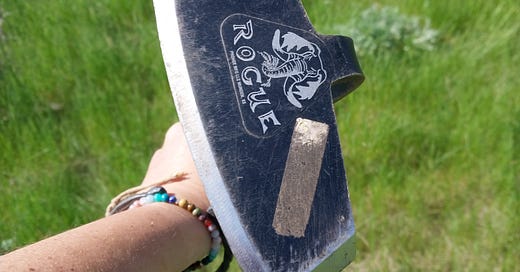



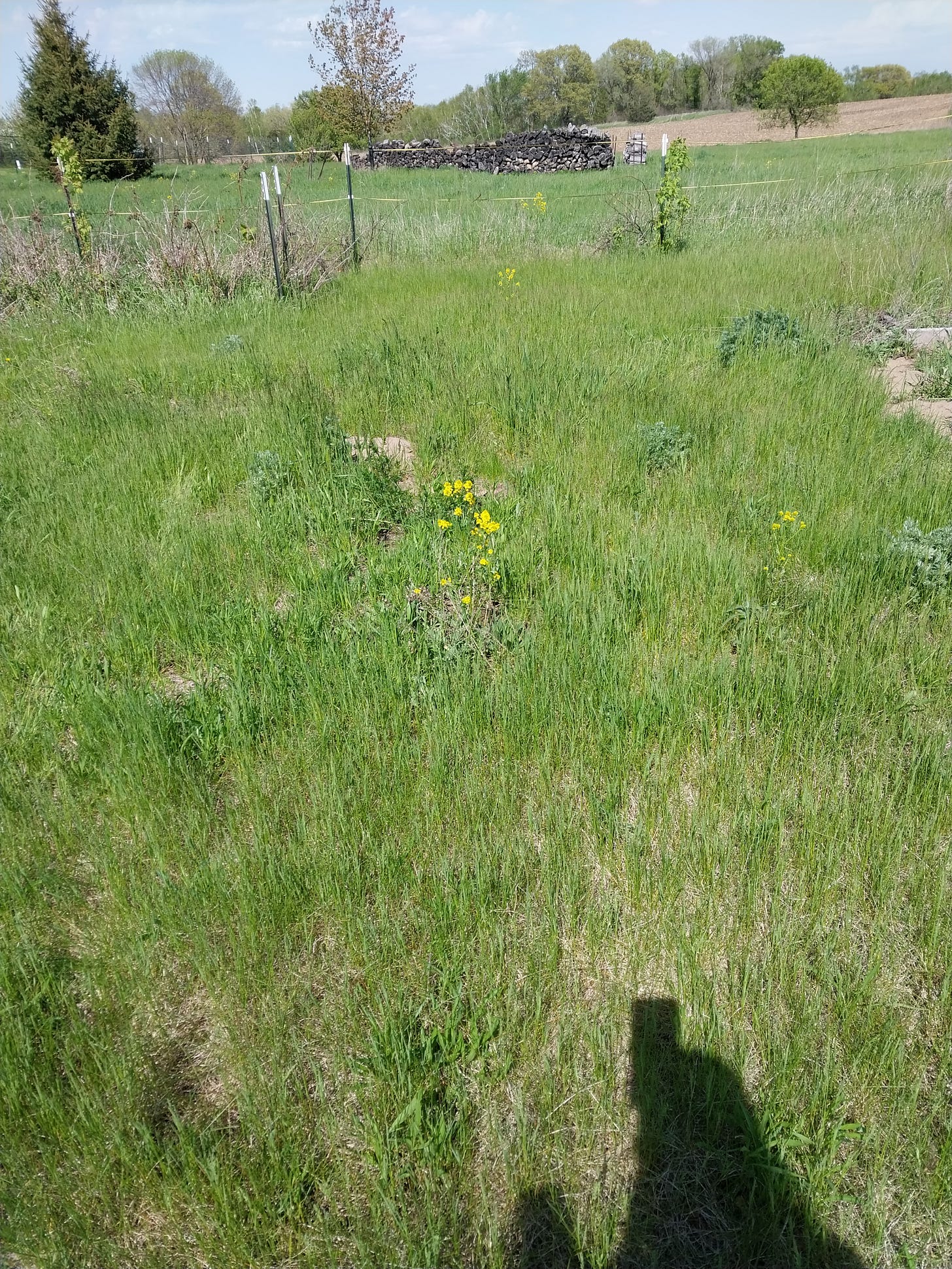
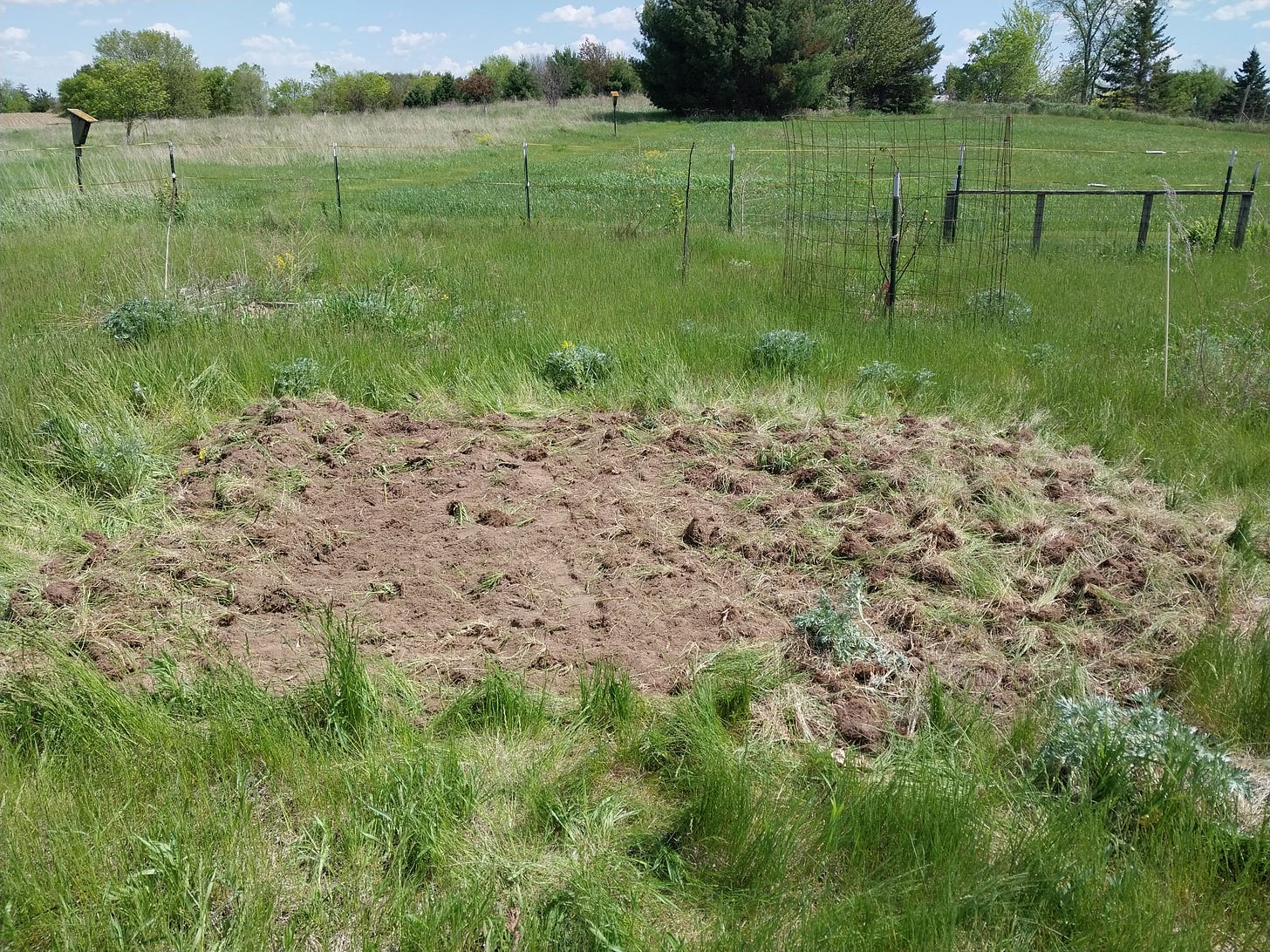
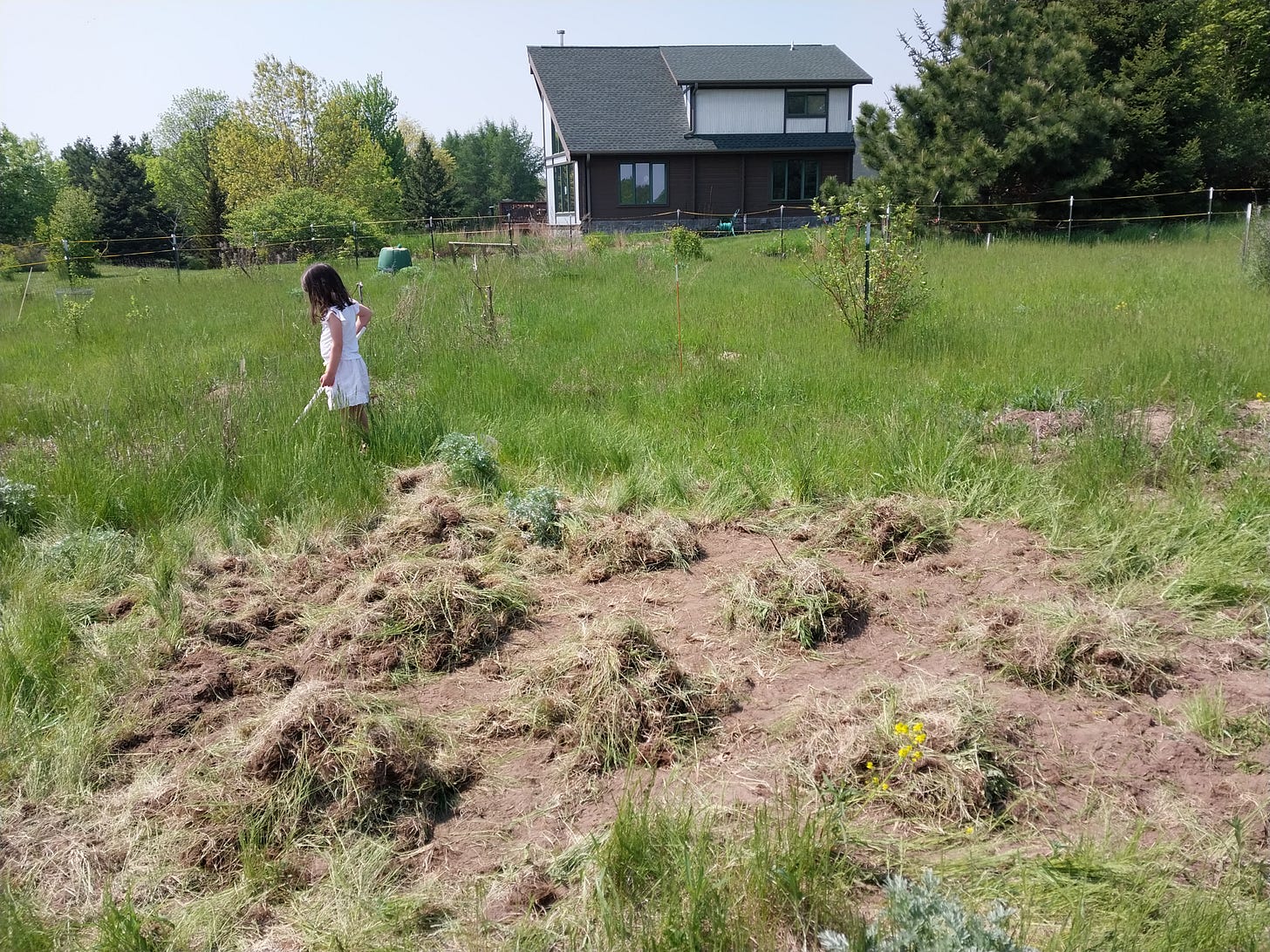
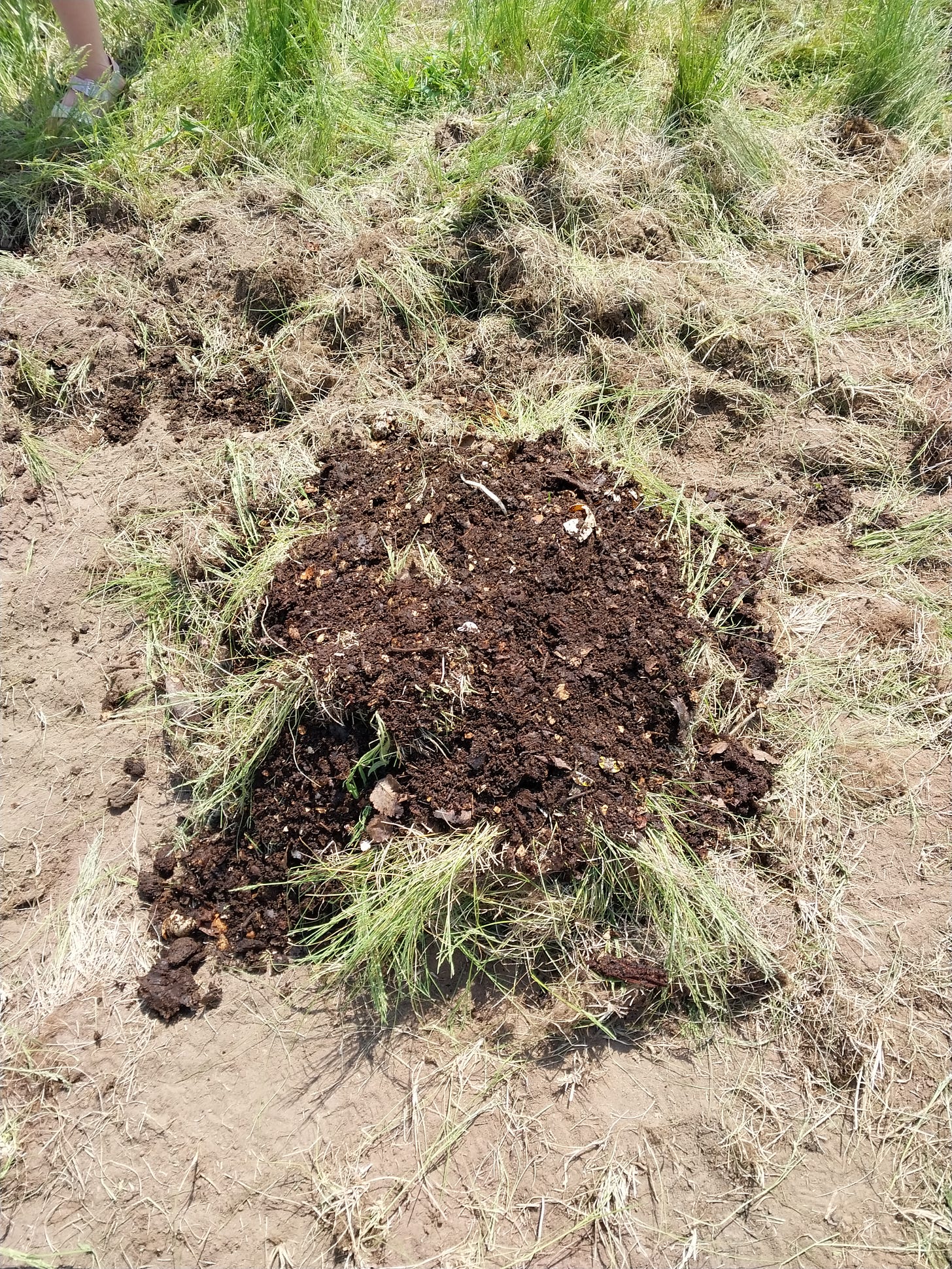





Wow, that was fascinating and really useful. We're heading into winter now in the Southern Hemisphere (Australia) but I'm going to keep this in mind for spring... and buy the Sacred Gardeners course you mentioned.